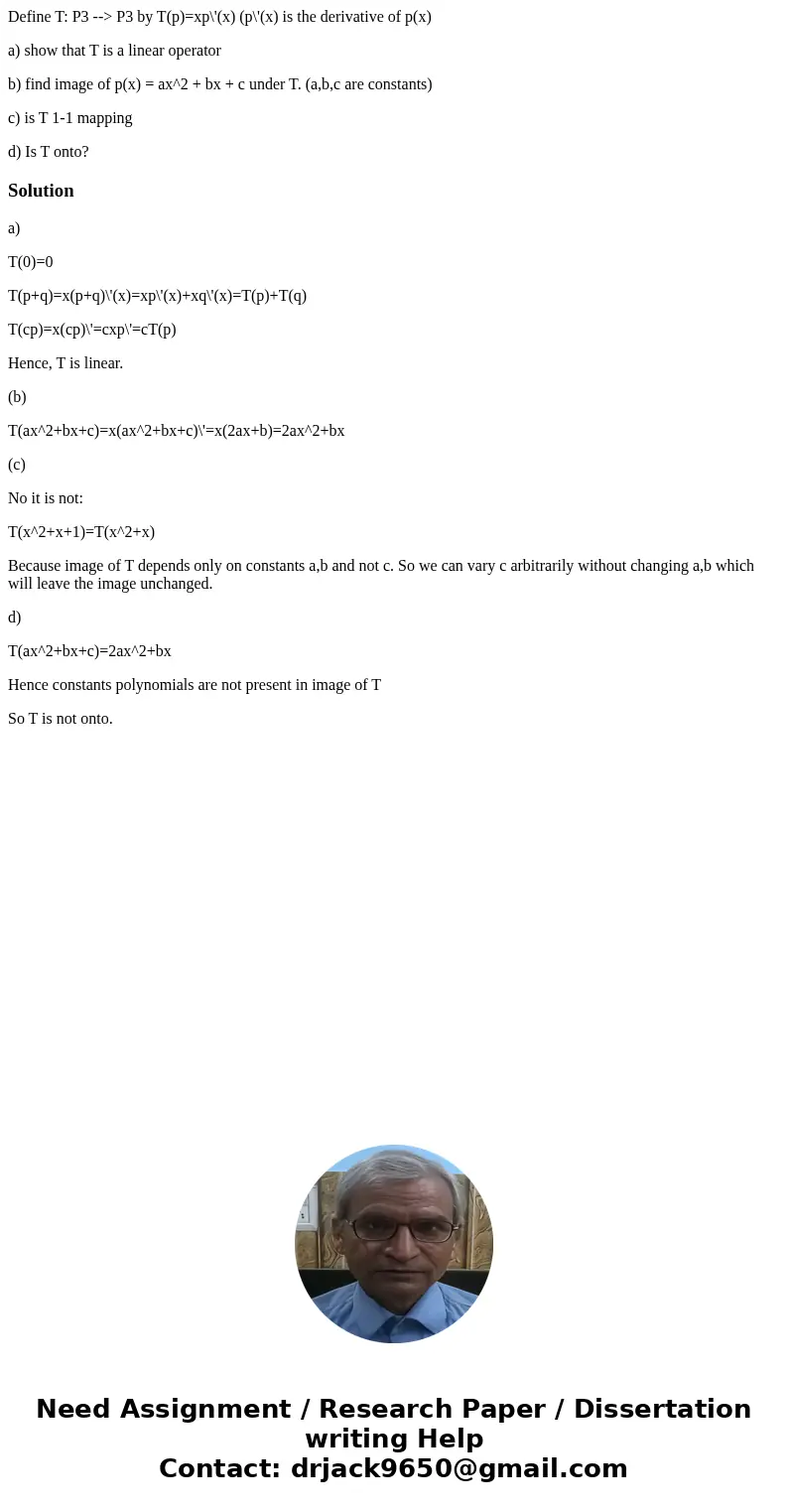Define T P3 P3 by Tpxpx px is the derivative of px a show t
Define T: P3 --> P3 by T(p)=xp\'(x) (p\'(x) is the derivative of p(x)
a) show that T is a linear operator
b) find image of p(x) = ax^2 + bx + c under T. (a,b,c are constants)
c) is T 1-1 mapping
d) Is T onto?
Solution
a)
T(0)=0
T(p+q)=x(p+q)\'(x)=xp\'(x)+xq\'(x)=T(p)+T(q)
T(cp)=x(cp)\'=cxp\'=cT(p)
Hence, T is linear.
(b)
T(ax^2+bx+c)=x(ax^2+bx+c)\'=x(2ax+b)=2ax^2+bx
(c)
No it is not:
T(x^2+x+1)=T(x^2+x)
Because image of T depends only on constants a,b and not c. So we can vary c arbitrarily without changing a,b which will leave the image unchanged.
d)
T(ax^2+bx+c)=2ax^2+bx
Hence constants polynomials are not present in image of T
So T is not onto.

 Homework Sourse
Homework Sourse